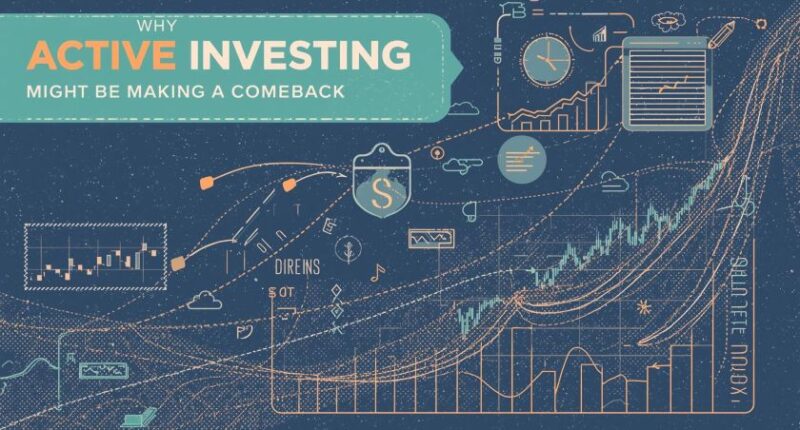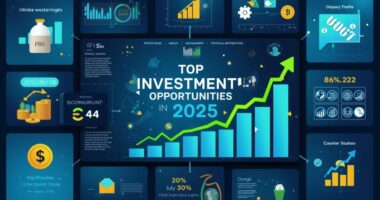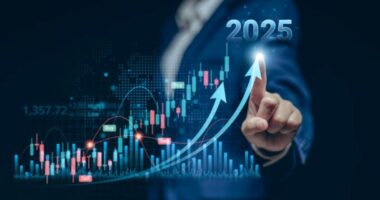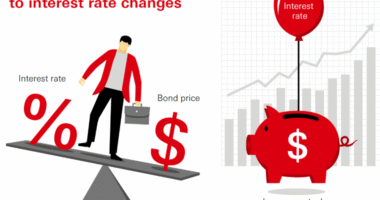The world of investing moves in cycles, and strategies that once seemed outdated often find new life as markets evolve. Over the past decade, passive investing — tracking index funds and ETFs — has dominated global markets. But as 2025 unfolds, signs suggest a potential comeback for active investing. With shifting interest rates, global uncertainty, and the rise of AI-driven analysis, many investors are rethinking whether active portfolio management deserves another look.
Understanding Active Investing
Before diving into why active investing is regaining attention, it’s important to clarify what it is — and why it fell out of favor.
Active investing involves making specific investments with the goal of outperforming a market index. Active managers analyze companies, study market trends, and adjust portfolios frequently to take advantage of short-term opportunities.
In contrast, passive investing focuses on replicating the performance of an index like the S&P 500. It’s low-cost, low-maintenance, and has historically beaten most active funds after accounting for fees.
But in 2025, market conditions are changing — and that’s opening new doors for active strategies.
The Market Environment Is No Longer One-Directional
For much of the past decade, markets were driven upward by low interest rates, easy liquidity, and tech-sector dominance. Passive investors thrived because nearly every stock was lifted by the same rising tide.
However, as interest rates rise and inflation persists, that uniform growth pattern is breaking apart. Certain sectors — like energy, defense, and healthcare — are outperforming others.
This kind of fragmented market environment favors active managers, who can selectively invest in sectors with stronger fundamentals while avoiding the weaker ones.
“The era of everything going up together is over,” says a JPMorgan strategist. “This is a stock picker’s market again.”
Volatility Creates Opportunity
In 2025, market volatility remains a key theme. The global economy is still adjusting to post-pandemic supply chain shifts, central bank policies, and geopolitical tensions.
While volatility can scare away passive investors, active investors see it as opportunity. Rapid market swings allow skilled fund managers to buy undervalued assets and sell overhyped ones.
For example, during 2024’s market dips, active funds that pivoted to value and small-cap stocks managed to outperform the S&P 500 by notable margins — something rarely seen in the previous decade.
The Rise of AI and Data-Driven Investing
Technology is also reshaping how active investing works. Artificial intelligence and big data tools have given portfolio managers new levels of insight into market movements, company performance, and investor sentiment.
AI can now process billions of data points in real time, helping active investors make faster, more informed decisions. This has narrowed the gap between traditional human-driven analysis and automated systems.
H3: The “Smart Active” Era Begins
Some analysts are calling this new trend “Smart Active Investing” — a hybrid approach that blends human judgment with algorithmic precision.
Firms using AI-assisted strategies can identify market inefficiencies faster than index funds, providing a competitive edge that didn’t exist a few years ago.
Passive Investing Is Showing Cracks
For years, passive investing looked unbeatable — but cracks are beginning to show.
When every investor piles into the same index funds, valuation distortions emerge. Companies in major indexes receive disproportionate capital inflows, regardless of their actual performance or fundamentals.
As a result, some index-heavy stocks have become overpriced, while smaller, undervalued companies are overlooked. Active managers are now positioning themselves to exploit these inefficiencies.
In 2025, several fund reports revealed that select active managers outperformed passive benchmarks for the first time in nearly a decade — a signal that the balance may be shifting.
Investors Want More Control and Customization
Passive investing offers simplicity, but it can feel impersonal. As investor awareness grows, more people want portfolios that reflect their values, risk tolerance, and financial goals.
Active investing allows customization in ways index funds cannot — from sustainable investing (ESG) to thematic sectors like AI innovation, renewable energy, and cybersecurity.
H3: Personalization Is the Future of Investing
Modern investors aren’t just seeking returns; they want purpose-driven portfolios. Active managers who can align investments with client preferences are seeing renewed demand, particularly among high-net-worth and millennial investors.
Inflation and Interest Rates Demand Active Management
High inflation and unpredictable interest rate policies are rewriting investment playbooks.
In a rising-rate environment, bond prices fall, and traditional fixed-income investors are under pressure. Active managers can tactically adjust duration, shift to inflation-protected securities, or explore global opportunities to preserve returns.
Passive funds, which mirror entire indexes, can’t make those quick adjustments. This flexibility makes active fixed-income management particularly attractive again in 2025.
The Psychological Edge of Active Investing
Beyond numbers, active investing appeals to the psychology of engagement. Many investors feel more confident when they can participate in decision-making and understand why a fund holds certain assets.
That emotional connection often translates to better investor discipline. Instead of panic-selling during downturns, investors with active managers tend to hold steady, knowing there’s a strategy at play.
Active Investing Isn’t for Everyone
Despite its growing appeal, active investing isn’t risk-free. Fees remain higher, and consistent outperformance is still difficult.
The key for 2025 and beyond is selectivity — choosing the right active managers with proven track records, transparent strategies, and disciplined risk management.
For most investors, a balanced approach that combines both active and passive elements may deliver the best of both worlds: stability from index exposure and opportunity from strategic active positions.
Final Thoughts — The Return of the Active Investor
After years of being overshadowed by low-cost index funds, active investing is stepping back into the spotlight.
Changing economic conditions, technological innovation, and investor preferences are all contributing to its revival.
As 2025 unfolds, those who can adapt quickly, leverage data-driven tools, and remain nimble may find that the age of the stock picker isn’t over — it’s evolving.
Key Takeaway
Active investing is making a comeback because the market is changing.
Rising volatility, the power of AI, and a more fragmented global economy are creating space for smart, flexible strategies.
While passive investing will always have its place, the future may belong to those who combine technology with human insight — the true spirit of modern active investing.









